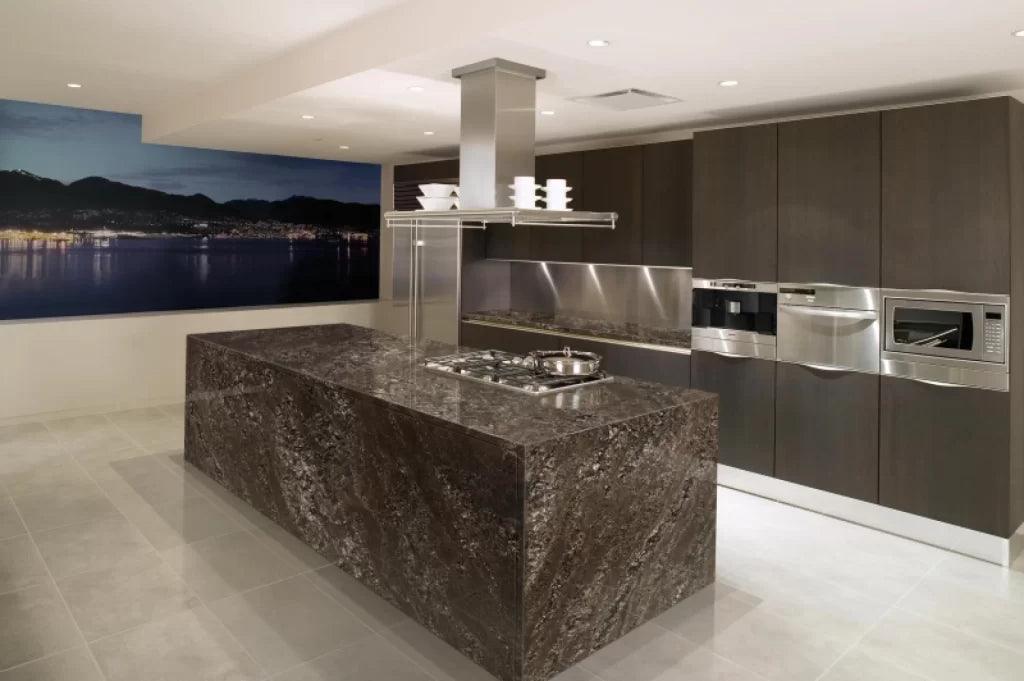Granite Stone: The Timeless Symbol of Strength, Luxury, and Versatility
by Shivam Tayal 19 Feb 2025 0 Comments
Introduction of Granite Stone
- Granite stone is often referred to as the "king of natural stones", due to its high durability, versatility and visually striking materials available in the world of design
- it is known for its natural elegance, unparalleled strength and resistance to wear and tear which is why it has been an ideal choice for monumental structures, luxurious interiors and durable outdoor installation for many years
- This stone has been formed from intense heat and immense pressure beneath the Earth's crust for millions of years
- This type of stone is an igneous rock which is mainly made up of quartz, feldspar, and mica which gives it its distinctive crystal-like texture and unique colour variations.
- Thus no two slabs of granite can look the same because each stone has its own unique patterns and veins making all the slabs one of a kind.
- Due to this, they can cater to a wide range of design requirements from architects and interior designers
- It has high resistance to heat, scratches and stains which makes the optimal choice for countertops, vanities and flooring
- It is often seen as a symbol of permanence and luxury
- Modern technologies like CNC and advanced polishing techniques have further revolutionised the way granite is cut, finished and installed which allows for precision, consistency and endless design possibilities.
- Granite, due to its high durability is seen as a valuable investment for both residential and commercial applications.
History and Evolution of Granite
- Granite stone has been in use for thousands of years, this stone has been used by civilisations across the globe due to its exceptional durability
- Egyptians were among the first people to realise the value of it as they used it in the construction of pyramids, obelisks and statues which showed Grantie true strength and timeless beauty
- In ancient India granite played an important role in creating beautiful temples, shrines and sculptures, due to the durability of the stone intricate carvings remained preserved till now
- The popularity grew immensely during the Renaissance period because artisans discovered its true potential for structural and decorative purpose
- Advancements in quarrying and transportation technologies made granite more accessible which led to widespread use in public buildings statues and commercial projects
- After the Industrial Revolution, the introduction of automated cutting and polishing techniques increased the efficiency and consistency in delivering high-quality granite slabs.
- Due to this today, granite has become an integral part of our architecture not only for making grand structures but also in residential and commercial spaces as it timeless charm always inspires architects.
Applications of Granite
- The application of this type of stone is very diverse due to its remarkable strength, resilience and natural beauty
- This type of stone is most commonly used for kitchen countertops, bathrooms, vanities and flooring in residential spaces due to its resistance to heat, scratches, and stains thus making them perfect for everyday use
- They are also used for fireplace areas, accent walls and staircase cladding as their natural patterns and vibrant colours create a sophisticated and luxurious atmosphere
- They are extensively used for office spaces, hotel lobbies and upscale restaurants in commercial spaces, where their polished finish creates an elegant and grand atmosphere.
- They are an optimal choice for areas like train stations, airport terminals and shopping malls where practical features like durability and longevity matter.
- Granite is also used a lot for outdoor landscaping projects due to its weather resistance, low porosity and anti-slip nature
- With the advancement in technologies, granite is available in different finishes such as polished, tumbled, honed and leathered which allows it to cater to a huge range of needs and wants of designers
Installation Process of Granite
- Proper installation of granite is important for longevity and functionality as it requires precision, expertise and attention to detail
- The first step is site preparation, in which ground is carefully levelled and excavated to create a strong base
- The next step is to add a bedding layer of sand and mortar mix which is spread evenly across the prepared base creates a smooth and supportive layer for the stones
- Then comes the most important step which is the placement and alignment of the stone to create a seamless look.
- After the stone placement, a high-quality adhesive and mortar mix applied to secure them into their position
- Then joints between the stones are filled with grout or polymeric sand depending on the usage, excess grout is then cleaned and carefully wiped to prevent any residue buildup
- For outdoor installations, a sealant is applied to protect the stones from stains, moisture infiltration, and environmental damage, ensuring long-term durability.
- After these steps, we can make sure that the stone would be so strong and durable that it could withstand for many years while continuously offering its timeless charm and elegance.




